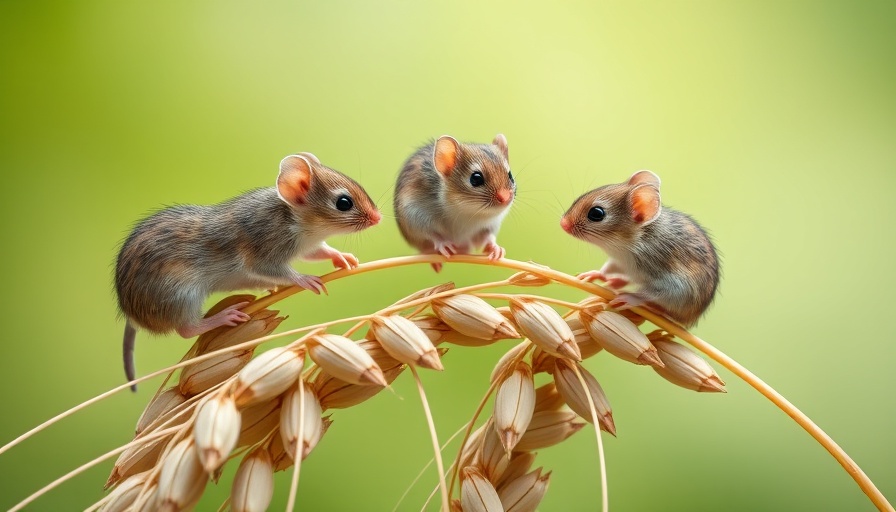
Mice Exhibit Empathy: Discovering Their First Responder-Like Behavior
Recent research conducted at the University of Southern California's Keck School of Medicine has uncovered fascinating behavioral patterns in mice that mirror human first responder actions. This study showcases how social mammals, like mice, come to the aid of their injured companions through a series of supportive behaviors, revealing insights into the roots of empathy and altruism in the animal kingdom.
Understanding the Depth of Altruistic Behavior
This groundbreaking study highlights a range of responses displayed by mice when one of their own becomes unconscious. Researchers observed that these “helper mice” would engage in various actions, from gentle grooming and sniffing to more assertive maneuvers, like biting their companion's mouth or tongue, ultimately attempting to revive their unconscious peers.
The use of tongue-pulling to free the airway, with an impressive success rate of 80%, shows not only intelligence but also a deep understanding of social responsibility among these small creatures. "It's incredible to see this first responder-like behavior in mice," remarked Li Zhang, the study leader, emphasizing the importance of this discovery in the broader context of animal behavior.
The Role of Friendship and Social Bonds
Notably, the study revealed a crucial finding: mice were more likely to assist those they were familiar with rather than strangers. The friendships formed among these animals influenced their propensity to help, suggesting that social bonds are integral to their altruistic tendencies. Exposure to these interactions translates to a better understanding of how social behaviors manifest across different species, including humans.
Neuroscience and the Oxytocin Connection
According to neuroscientists, oxytocin—a hormone known for its role in forming social connections—plays a pivotal part in enabling these prosocial behaviors in mice. Research indicates that neurons responsible for oxytocin release are activated during these rescue attempts, implicating this hormone in the establishment of empathy and cooperative actions. Understanding the oxytocin system not only sheds light on mouse behavior but also suggests parallels with human social behaviors.
James Burkett, a neuroscientist not involved in the study, further highlights that recognizing these altruistic impulses in mice can give us greater insight into our own species. “Exploring the biological foundations of these behaviors can lead to a better understanding of empathy in humans,” he emphasized.
Implications for Future Research
This research opens new paths for understanding how social animals have evolved to aid one another in critical situations. It prompts researchers to explore aspects of empathy beyond simple rescue behaviors, probing deeper into the roles of social connections in survival strategies.
The findings also raise important questions about prosocial behavior in other vertebrate species, urging further studies on biological functions and the potential for empathy across different animals. As researchers develop longer-term studies, the complexity of mouse behaviors toward their unconscious peers may reveal even more about social bonds and altruism.
Reflections on Human Behavior and Social Responsibility
These findings not only reshape our understanding of mice but also prompt us to reflect on human behaviors. The nature of helping others in need, often seen as a hallmark of human civilization, may have deeper ties to our evolutionary history. With the similarities in reactions observed in both species, we can ponder whether these altruistic behaviors are inherent to social mammals.
In light of this research, it becomes crucial for humans to consider our roles as social beings, driving us towards empathy and proactive social support in our communities.
Conclusion: What Can We Learn?
The recent study on mice offers profound insights into the understanding of altruism and social bonds within the animal kingdom. Recognizing that even small creatures exhibit first responder-like behavior to help their friends significantly enriches our knowledge of animal welfare and social interaction. The implications for future research could lead to essential advancements in our comprehension of not only animal behavior but also human empathy.
As we continue to observe and reflect upon the interconnectedness that defines both animal and human societies, this study reinforces the importance of fostering empathy and cooperation in every community.
 Add Row
Add Row  Add
Add 




Write A Comment